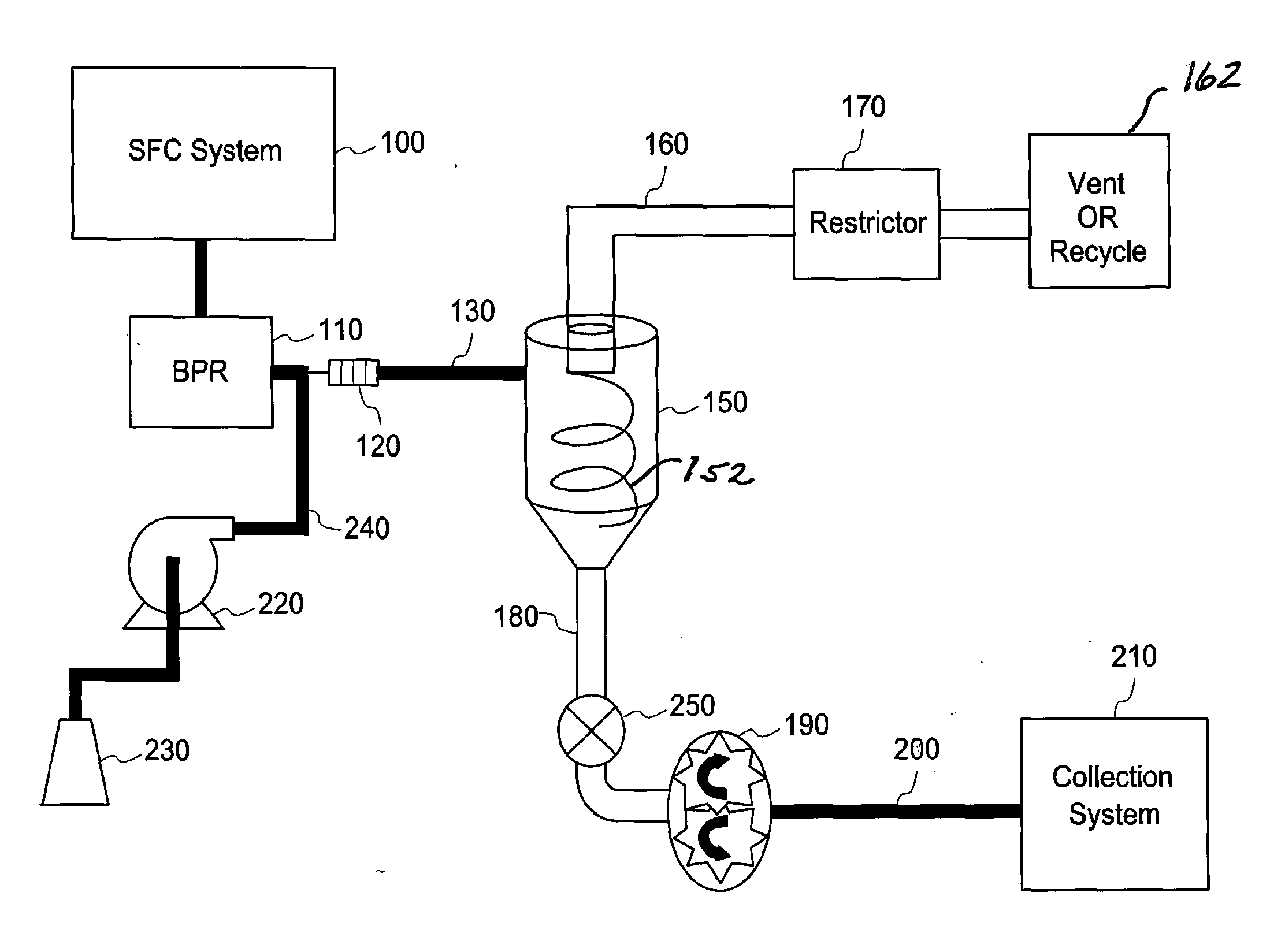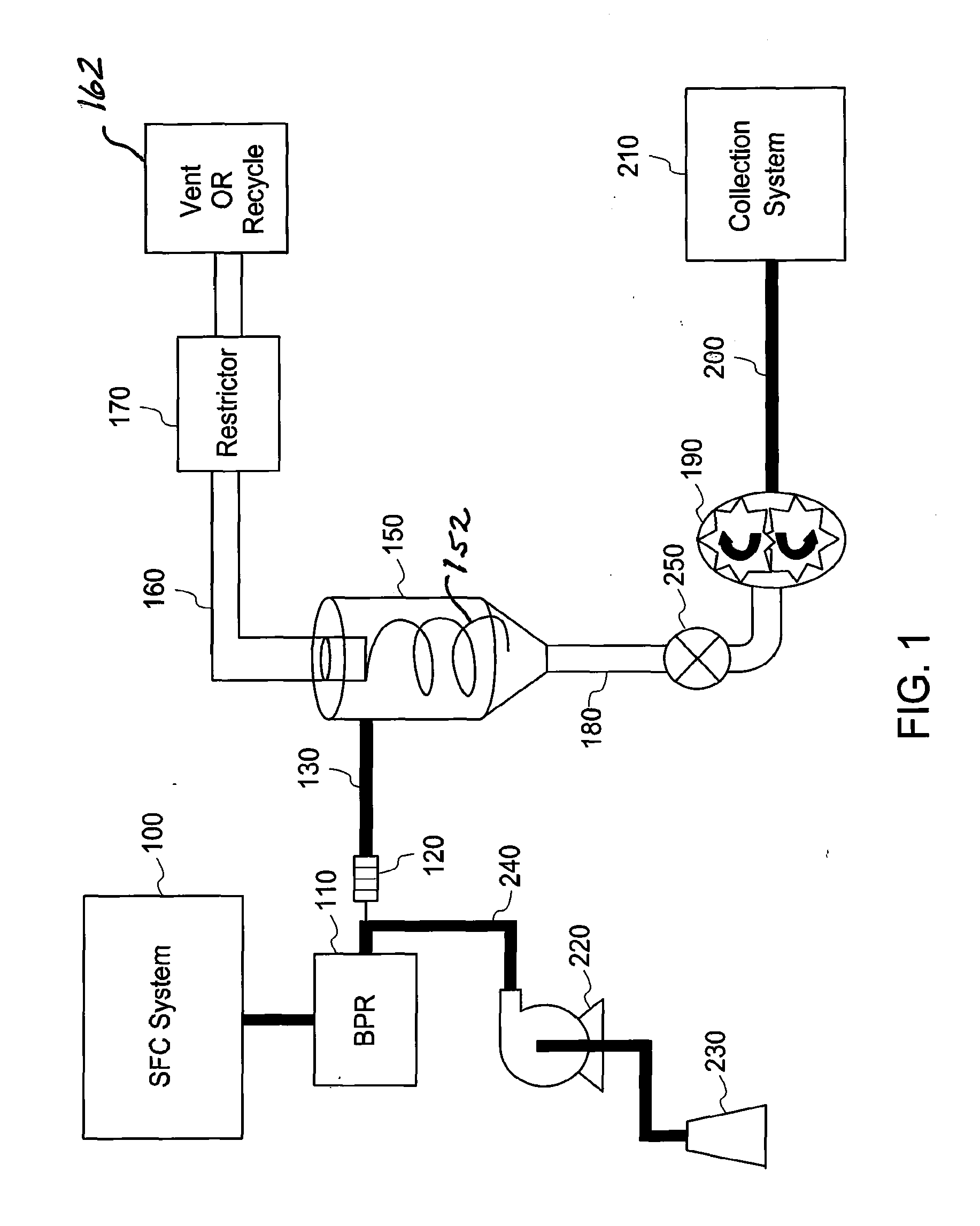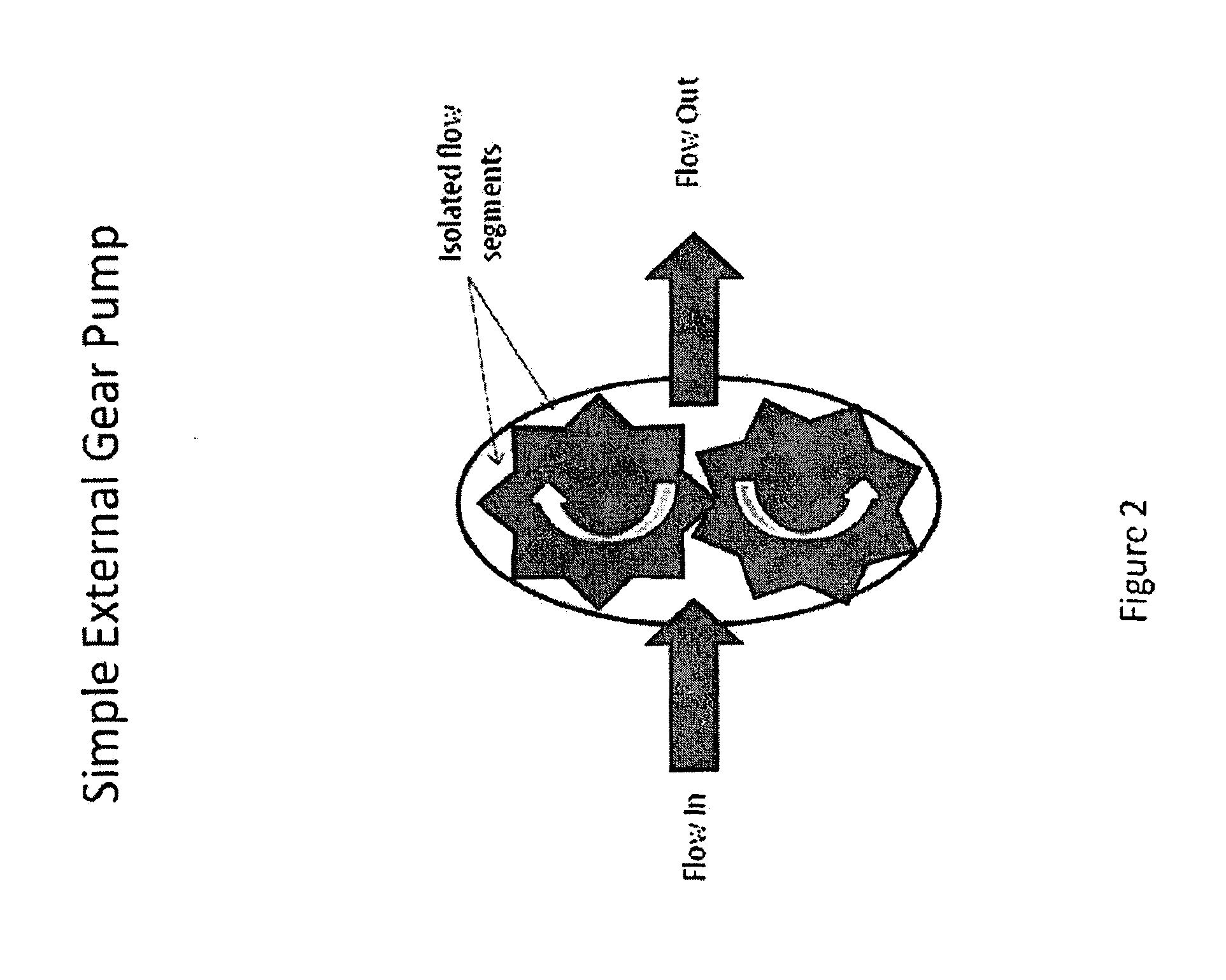System and process for an active drain for gas-liquid separators
a gas-liquid separator and active drain technology, which is applied in the direction of liquid degasification, separation process, liquid degasification regulation/control, etc., can solve the problems of cyclonic separators that are not perfect, loss of sample, and possible contamination of downstream components, so as to achieve better deterministic draining
- Summary
- Abstract
- Description
- Claims
- Application Information
AI Technical Summary
Benefits of technology
Problems solved by technology
Method used
Image
Examples
Embodiment Construction
[0031]FIG. 1 illustrates a schematic process flow diagram of an illustrative embodiment that includes the collection end of a preparative SFC system. In this figure, chromatographic SFC system 100 is comprised of necessary fluid sources, pumps, injectors, separation columns and detectors to effectively allow injection of a sample mixture into the system and create a time and flow segment separated stream of “peaks” containing individual dissolved compounds of interest. The fluid carrier, or mobile phase, of the flow stream is comprised of a mixture of near supercritical carbon dioxide, or equivalent carrier stream, and an organic modifier such as methanol, ethanol or isopropanol. The carbon dioxide (C02) is maintained well above its critical pressure during the chromatographic process by backpressure regulator (BPR) 110.
[0032]Immediately following BPR 110, the mobile phase experiences a large pressure drop typically on the order of 60 to 200 bars. This brings the C02 of the mobile p...
PUM
| Property | Measurement | Unit |
|---|---|---|
| density | aaaaa | aaaaa |
| temperature | aaaaa | aaaaa |
| temperature | aaaaa | aaaaa |
Abstract
Description
Claims
Application Information
 Login to View More
Login to View More - R&D
- Intellectual Property
- Life Sciences
- Materials
- Tech Scout
- Unparalleled Data Quality
- Higher Quality Content
- 60% Fewer Hallucinations
Browse by: Latest US Patents, China's latest patents, Technical Efficacy Thesaurus, Application Domain, Technology Topic, Popular Technical Reports.
© 2025 PatSnap. All rights reserved.Legal|Privacy policy|Modern Slavery Act Transparency Statement|Sitemap|About US| Contact US: help@patsnap.com



